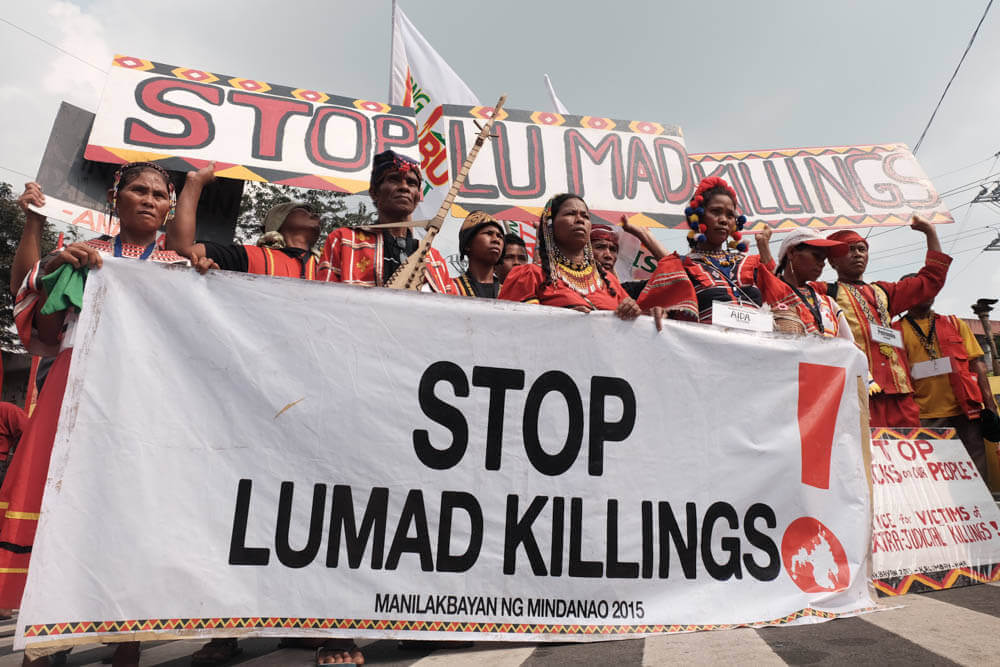
by Deep Green Resistance News Service | Jan 2, 2018 | Colonialism & Conquest
by Pam Tau Lee / Intercontinental Cry
The Lumad are Indigenous Peoples in the southern Mindanao region of the Philippines. The term Lumad is short for Katawhang Lumad (Literally: “indigenous people”), a description officially adopted by delegates of the Lumad Mindanao Peoples Federation founding assembly on June 26, 1986. This grew out of a political awakening among tribes during the martial law regime of President Marcos and reflects the collective identity of 18 Lumad ethnic groups. The assembly’s main objectives was to achieve self-determination and governance for their member-tribes within their ancestral domain in accordance with their culture and customary laws.
The Lumad have a traditional ancestral concept of land ownership which is communal private property. Community members have the right utilize any piece of unoccupied land within the communal territory. Lumad ancestral lands include rain forests, hunting grounds, cultivated and uncultivated land and valuable mineral resources (copper, nickel, gold, chromite, coal, gas, cement) below the land.

For decades the Lumad had been forced to physically defend their right to control their ancestral territories against corporate plunder and militarization. Unable to match up to the armed forces of the government and profiteers the Lumad have had to flee their communities; their land has been seized by multinational corporations and logging companies. Wealthy Filipino migrants and multinationals are planting and exporting palm oil, bananas, rubber and pineapple.
Unequipped to understand the modern land tenure system, the Lumad have established schools in their communities supplying knowledge to young adults and youth on how to protect their rights, property and culture. While these schools have always posed a threat, President Duterte has taken the unprecedented step of directing the Department of Education to close them down and has also encouraged the killing and arrest of Lumad teachers, which continues to go unpunished.
The history of violence and unwarranted (extrajudicial) killings of Lumad at the hands of military, paramilitary, and private security forces is in the hundreds, with the arrest and torture Lumad activists in the thousands. Fifty-six percent of Philippine military have been deployed to the Mindanao region. Today many of the Lumad have sought safety and shelter in evacuation centers where they and other victims of war are crowded into small spaces, lacking sanitary conditions and food, and endure harassment by local police including sexual harassment.

Bolstered by the recent visit of Trump to the Philippines who has promised and delivered increased in military funding to the Philippines, President Duterte has extended martial law on the whole island of Mindanao under the guise of war on terrorism and drugs and has launched a full-scale assault on social justice activists throughout the Philippines, including the Lumad people.
Where there is oppression there is resistance. The Lumad have organized protest actions against mining, extrajudicial killings, and the militarization of their communities, and have led “Manilakbayan” people’s caravans from Mindanao to Manila where they have built unity with Moro and peasant communities and other oppressed sectors in Mindanao and, together, have brought these people’s demands to the national capital. There are some young Lumad that say, because the repression suffered by their community is so bad, at times they consider joining the New Peoples Army. In fact, some Lumad do engage in armed resistance to defend their ancestral lands, as Lumad have done since time immemorial, from fending off logging corporations using spears and native weapons to taking up arms with the New Peoples Army as part of the decades long revolutionary struggle led by the Communist Party of the Philippines. The Lumad struggle continues to take many forms—and as state repression and encroachment on ancestral lands has worsened, Lumad resistance has continued to grow.
In October of 2016, the Lumad people sent messages of solidarity to the tribes and Water Protectors at Standing Rock as they clearly understood the universal common struggle of indigenous to protect the land.

In this moment of intense violence, the International Interfaith Humanitarian Mission 3.0 proposes the following recommendations for the victims of the military operations in Marawi City: Continue relief, medical services and psychosocial intervention for the victims; a just recovery and reparations for homes and properties destroyed; make the Duterte government accountable for the death, displacement of residents and destruction of Warawi City; put people over profit in the rehabilitation of Warawi so that the residents can return to their original communities not profit driven development.
Pam Tau Lee is Chair of the International Coalition for Human Rights in the Philippines (ICHRP) – U.S.
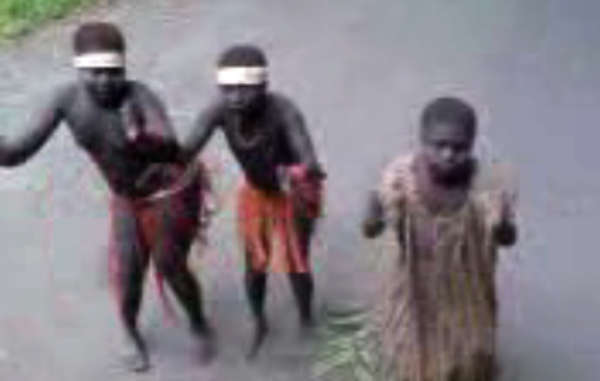
by Deep Green Resistance News Service | Oct 17, 2017 | Colonialism & Conquest
Featured image: Still from video showing Jarawa girls forced to dance for tourists along the illegal Andaman Trunk Road. © Anon
by Survival International
Tour operators in India’s Andaman Islands are selling “human safaris” to the reserve of a recently-contacted tribe, despite government promises to ban the practice.
Tourists travel along a road through the Jarawa’s forest, treating tribespeople like animals in a safari park. In 2013, the Andaman government promised to open a sea route to the Islands’ most popular tourist destinations, which would stop tourists needing to drive through the Jarawa’s reserve. The sea route has recently become operational.
But despite the authorities’ commitment to ensuring all tourists would have to use the sea route, very few currently do, and the market in human safaris along the road is flourishing.
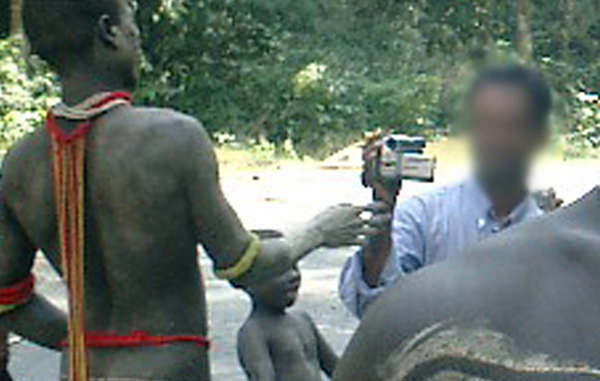
A tourist films a Jarawa man up close on the road. Campaigners have raised deep concerns about the dangerous, degrading and exploitative nature of tribal tourism. © Survival
One tour company, Tropical Andamans, states that: “The Famous Jarawa creek is a lonely planet in itself. It is the dwelling place of the oldest tribes found in these islands. The tribes known as Jarawas, are aloof from the civilized world. They are the wonder of the modern world, for they feed on raw pigs, fruits, and vegetables. They don’t speak any language known to general public. Their pitch black skin and red eyes will leave you dazzled in case you happen to meet them.”
A tourist website, Flywidus, offers a glimpse of “primitive tribals” to tourists driving through the Jarawa reserve, and another, Holidify, describe the Jarawa as a “major attraction” and claims that the Jarawa “love the high of specific drugs, one of it being tobacco.”
In 2002 India’s Supreme Court ordered the road closed, but it has remained open continuously despite pressure from human rights campaigners.
Survival International led a global campaign against the human safaris, calling for a boycott of the Andaman tourist industry until they came to an end. Nearly 17,000 people from around the world pledged not to holiday in the islands in protest.
In a recent statement, the Andaman government said that the road: “…shall remain open for the use of both islanders and the tourists as no decision has been taken by this Administration for closing it down for the tourists. However, the tourists have been advised to avail boat service.”
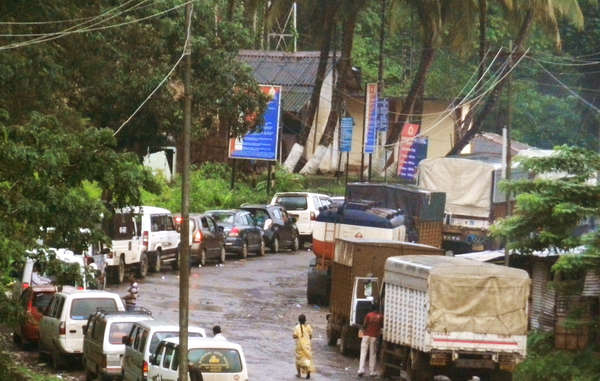
Tourist vehicles queuing to enter the Jarawa tribal reserve. © www.andamanchronicle.net /Survival
Background briefing
– The road brings a daily invasion of hundreds of tourists into the heart of the Jarawa reserve. The promotion by tour operators of sightings of the Jarawa is illegal in the islands, but this is not being enforced.
– The UN, India’s Minister for Tribal Affairs and members of the European Parliament have all condemned the practice.
– One tourist described his trip: “The journey through tribal reserve was like a safari ride as we were going amidst dense tropical rainforest and looking for wild animals, Jarawa tribals to be specific.”
– The Jarawa, like all recently contacted peoples, face catastrophe unless their land is protected.
– The human safaris are also dangerous – one Jarawa boy lost his arm after tourists threw food at him from a moving vehicle. They sparked global outcry in 2012 after footage emerged of a tourist forcing several Jarawa girls to dance.
– Tribal peoples’ land rights have been part of international law for generations. The key to their survival and prosperity is to ensure their land remains under their control.
– All uncontacted and recently contacted tribal peoples face catastrophe unless their land is protected. Survival International is leading the global fight to secure their land for them, and to give them the chance to determine their own futures.
Survival’s Director Stephen Corry said: “The new sea ferry was supposed to stop tour buses driving through Jarawa land, and so put an end to these dangerous and disgusting human safaris. But the government wants it to be optional which defeats the purpose entirely. Tourist companies are still selling the safaris and profiting from the exploitation of tribal people. Ethical tourists should boycott the islands until this is stopped.”
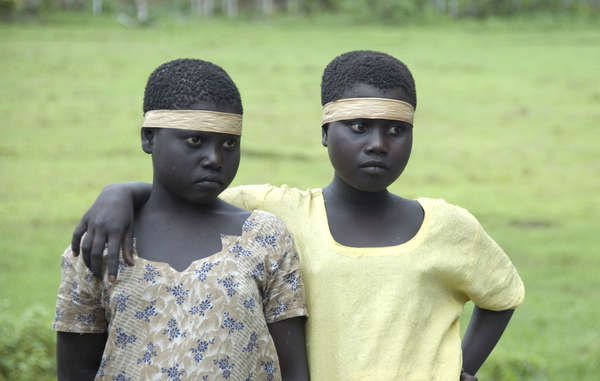
by Deep Green Resistance News Service | Sep 19, 2017 | Indigenous Autonomy
Featured image: Human safaris have risked exposing the Jarawa to diseases to which they have no immunity. © Survival
by Survival International
Notorious “human safaris” in India’s Andaman Islands may soon stop, after the authorities announced that a new sea route around the islands will soon open.
The new route will keep tourists off the infamous Andaman Trunk Road, which was built illegally through the forests of the isolated Jarawa tribe.
The road brings a daily invasion of hundreds of tourists into the heart of the Jarawa reserve, who treat the Jarawa like animals in a safari park.
One tourist described his trip: “The journey through tribal reserve was like a safari ride as we were going amidst dense tropical rainforest and looking for wild animals, Jarawa tribals to be specific.”
The Jarawa, like all recently contacted peoples, face catastrophe unless their land is protected.
The human safaris are also dangerous – one Jarawa boy lost his arm after tourists threw food at him from a moving vehicle.
In 2002 India’s Supreme Court ordered the road closed, but it has remained open.
Survival International led a global campaign against the human safaris, calling for a boycott of the Andaman tourist industry until they came to an end. Nearly 17,000 people from around the world pledged not to holiday in the islands in protest.
The boycott will be called off as soon as the Andaman government agrees to ensure that tourists are no longer able to use the road.
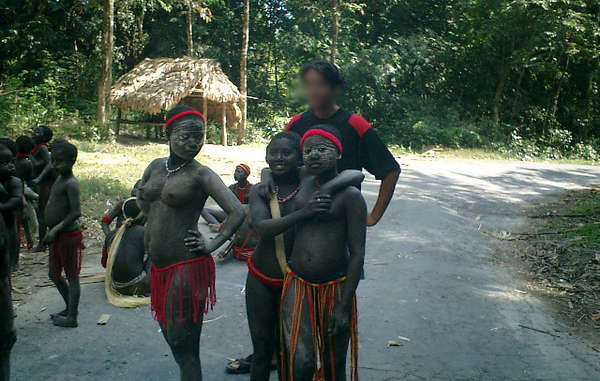
A tourist poses with a group of Jarawa. © Mauricio Cordova / Survival International 2008
Background briefing
– In 2012, shocking footage emerged of Jarawa girls being made to dance at the side of the road, during a human safari. This led to a global outcry against the dehumanizing use of tribal people as tourist exhibits.
– The Jarawa are one of the tribes indigenous to the Andaman islands. They live as hunter gatherers, and chose to reject contact with mainstream Indian society until 1998. Several other Andamanese tribes were wiped out following British colonization of the islands in the 19th century.
– In 1999 and 2006, the Jarawa suffered outbreaks of measles – a disease which has devastated many recently contacted tribes. and which is often a consequence of forced contact.
-Tourism is a major industry in the Andaman islands. The new sea route will be used to access the north of the islands and attractions like the limestone caves and mud volcano at Baratang without tourists intruding into the land of the Jarawa.
– The Islands’ Lieutenant-Governor, Professor Mukhi, announced recently that the sea route will be quicker and more comfortable than the current journey by road.

Still from video showing Jarawa girls forced to dance during a human safari. © Anon
Survival’s Director Stephen Corry said: “Treating the Jarawa as a tourist spectacle was a disgusting practice – it also put their lives in danger. It’s more than time for the human safaris to end. If this sea route can do that, then we welcome it. If not, we’ll carry on campaigning until the Jarawa’s right to determine their own futures and stop being harassed by tourists is secure.”
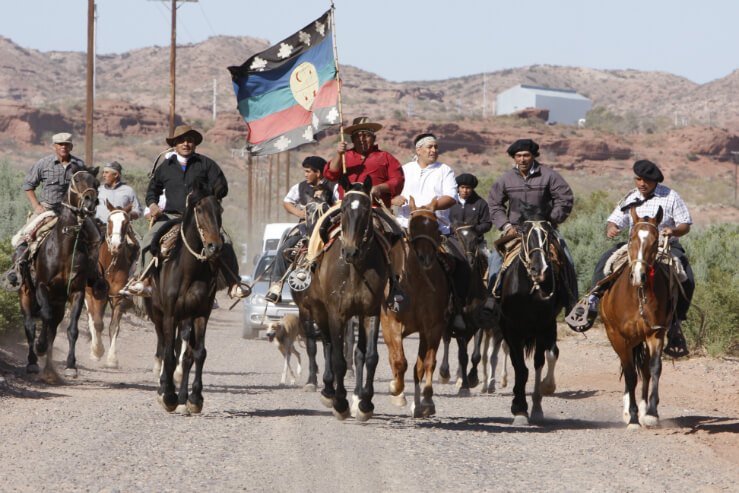
by Deep Green Resistance News Service | Sep 15, 2017 | Indigenous Autonomy
Featured image: James Anaya (former UN Special Rapporteur) visits Mapuche land in Argentina. Credit: Alejandro Parellada IWGIA
by Pamela Leiva Jacquelín, International Work Group for Indigenous Affairs (IWGIA) / Intercontinental Cry
Imagine that your survival depended on defending your right to live where you are standing right now.
Any day, the government could decide to start extracting oil or constructing a highway, exactly where your family goes to sleep every night, without consulting you. Just picture the mine or highway polluting the water you drink and poisoning the soil so completely that crops can’t even grow. On top of this, every day you are pushed to speak a foreign language in a country that endangers your culture and way of life.
This scenario is not fictitious. It is a reality for many of the 370 million people worldwide who identify as Indigenous Peoples. If there could be a simple way to define them, we can agree that they are the living descendants of the pre-colonized inhabitants of lands now dominated by others.
It was only 10 years ago, when Indigenous Peoples around the globe achieved the most substantial victory in a century of demands: the United Nations Declaration on the Rights of Indigenous Peoples (UNDRIP).
The adoption of this declaration has been a breaking point, given the fact that 144 countries reaffirmed that Indigenous Peoples are entitled without discrimination to all human rights recognized in international law. Since 2007, the UNDRIP has guided global efforts to overcome and repair the historical denial of their most fundamental rights, including the most basic right to self-determination.
UNDRIP brought the concept of collective rights to the table. This means that as a group, Indigenous Peoples possess rights that are indispensable for their existence, well-being and integral development as a distinct society. This is perhaps the reason why many find it difficult to relate to their struggles, since dominant societies base policy making and development actions on the protection of individual rights, such as the right to property or privacy.

Maya Weavers holding a proposal for the recognition of collective intellectual property, February 2017. Photo: AFEDES
Representing 5 percent of the world’s population, today many Indigenous Peoples are still excluded from society and deprived of their rights as equal citizens of a state. Living in 70 countries and speaking more than 4,000 native languages, they have gained increasing visibility for raising their voices on aggressive development policies that threaten the world’s remaining ecosystems and the biodiversity that depends on them.
As the world moves fast to explore and exploit these ecosystems to meet increasing consumption, Indigenous Peoples are at the top list of those murdered for defending their land.
Almost 130 environmental activists have been killed so far in 2017. Another four are expected to be killed in the next week.
This global trend is not a coincidence. Indigenous territories are the richest in biodiversity and today more than ever they are becoming the new battleground for human rights and the environment.
“Even though violence against Indigenous Peoples is increasing, the Declaration should be celebrated. Without this Declaration, Indigenous Peoples wouldn’t have a chance to fight”, describes Julie Koch, Director of International Work Group for Indigenous Affairs (IWGIA).
The main driving force for the global assault on indigenous land is that state governments have largely failed to establish constitutional rights and protections for Indigenous Peoples. UNDRIP provides states with a legal framework to establish these rights and protections.
The increasing rates of criminalization of indigenous leaders and the murder of environmental defenders shows us just how much work states have to do for the Indigenous Peoples of the world. It is also a strong reminder that the world’s Indigenous Peoples are key to saving our planet.
The global trend of attacks on Indigenous Peoples takes different shapes on different continents. Let’s go through some of it.
Latin America: Where the Extractive Agenda Threatens Indigenous Victories
Even though Latin America has a favourable legal framework to rely on, it is often reported as the most dangerous continent for environmentalists. Many of the reported killings were of people trying to combat illegal logging in the Amazon.
It only takes a quick look into Brazil to understand what the fight is all about. Here is where the highest number of environmental defenders have died on Earth. Since 2013, 900 indigenous leaders have been killed for defending their lands, despite legally owning 12.2 percent of the country’s territory and living peacefully in 704 collective territories.
Another eye-opening case is Venezuela, where actually the land demarcation process has only met 13 percent of the cases in the last 17 years, neglecting the urgent call to action stated in the Constitution. Just to make things more complicated, the government recently approved the creation of the AMO (Orinoco Mining Arc) region, a mega mining project that will give 150 companies from 35 countries access to 12 percent of the national territory. Once again, national policies seem to forget how illegal mining has already driven aggressions and threats towards the Yabarana, Hoti and Panare peoples close to the border with Brazil.
The race for water is also affecting Guatemala, where hydroelectric projects are quickly on the rise. Groundwater recharge areas are located on indigenous land and indigenous communities have constantly denounced the theft of river water. Various companies and private landowners illegally divert rivers to sugar cane, banana and palm oil plantations and cattle ranches during dry seasons.
Surprisingly, Bolivia does not escape from this pattern. With a controversial political decision, Evo Morales gave the green light to construct a highway on indigenous land. This development project has for several years been opposed by environmentalists and the indigenous movement since it cuts through Isiboro Sécure National Park and Indigenous Territory (well-known as TIPNIS). The construction of this highway is part of a bigger plan. The highway aims to extend the existing Brazilian-led effort commonly known as IIRSA (Initiative for the Regional Integration of South America). This entails a network of 531 mega-projects that include hydroelectric dams, highways, bridges, and electrical power systems that seek to ease the flow of transportation of soybeans and coca across the region. But the impacts are not only economic. The highway will considerably affect the traditional way of life of three indigenous groups: the Tsimanes, Yuracarés and Mojeño-Trinitarios.
But the fight back seems promising. Indigenous autonomous governments are representing much more than a trend in the region. Self-governance is one of the most significant claims made by Indigenous Peoples in this part of the world and it seems to be on its peak of realization with the two first indigenous governments settled in Peru and Bolivia. The Wampís Nation’s Parliament and the Charagua government took office last year and made their goals clear: they aim to control how to administer the future of their ways of life within the territory they inhabit.

Wampis Nation mapping territory in Peru. Credits Jacob Balzani Lööv
Asia: Where Discrimination Pairs with Militarization
Asia is home to 260 million Indigenous Peoples, making it the most culturally diverse region in the world. The land dispute pattern in this region is significantly worse due to heavy assimilation pressure and violent repression by state security forces. As Indigenous Peoples in other countries, they face the routine denial of self-determination, loss of control over their land and extreme discrimination.
One of the most clear examples of the lack of respect for indigenous land rights is the conflict in the Chittagong Hill Tracts (CHT) region in Bangladesh, where approximately 600,000 Indigenous Peoples live. Ever since the creation of Bangladesh, the elected representatives of the CHT have demanded regional autonomy. Being trapped between demilitarization and displacement, gross human rights have been committed and documented over the last 10 years. The most affected by the conflict are indigenous women. Being under the review of the UN Convention on the Elimination of all Forms of Discrimination Against Women (CEDAW), several reports highlight cases of gender-based violence against indigenous women connected with land grabbing.
Indigenous Peoples and minority populations in the Philippines are also hit by militarization. The “war on drugs” and the fight against Maoist rebels now led by President Duterte has led to many political extrajudicial killings in their communities. Indigenous Peoples are also cornered by the aggressive expansion of monocrop plantations, especially oil palm plantations in Mindanao. Community members from the municipalities of Bataraza and Española in Palawan have reported how their rights had been violated by several companies that continue to expand on community lands with the complicity of government officials.
The situation in Nepal follows the course of aggressive development. During 2016, many protests against road expansion and electricity transmission lines intensified. The common picture that local indigenous communities paint is that bulldozers enter their land to ensure infrastructure developments go according the plan.
Perhaps the most illustrative situation of discrimination comes from Japan. The huge gap in public awareness shows the long lasting effects of systematic discrimination. A national survey released by the government in 2016 showed that 72.1 percent of Ainu people agreed that “discrimination against the Ainu people exist”, meanwhile 50.7 percent of the general public stated that “discrimination does not exist”.
Africa: Where Evictions are Driven by Conservation and Agribusiness
Laws protecting Indigenous Peoples are weak or nonexistent throughout continental Africa. With very little political support and space for critical NGOs and media that can effectively report on human rights violations, conservationist and agribusiness agendas frequently push Indigenous Peoples from their homelands.
In Loliondo village in Tanzania, indigenous communities suffer from a systematic attack that aims to reduce their number of livestock, which is vital for their survival. Increasing tensions and clashes with farmers and ranchers are usually driven by recurrent drought. Another common tactic used by the military is to burn houses, which speeds up illegal evictions.
Just last month, Serengeti National Park and Ngorongoro Conservation Area Authority rangers, with the support of Loliondo police, burned down about 185 Maasai bomas (homesteads). The evictions left approximately 6,800 people homeless, with most of their property destroyed.
Evictions are also a current challenge for Indigenous Peoples in Kenya, where the definition of community lands is not in place to allow the urgent need to formalize land ownership. Earlier this year, drought caused traditional herdsmen to steal pasture from landowners, burning down tourist lodges and grabbing the attention of the world media in the process. Laikipia, meanwhile, has experienced unprecedented grazing pressure and the Maasai have been forced to endure limited access to water. This is not the first time that climate shock has systematically triggered violence over land rights in Northern Kenya. The chain of events is pretty straightforward: when there is no water, no grass grows and pastoralists’ cattle starve to death.
The other side of the coin is that Indigenous Peoples are gaining recognition in the courts. Against all odds, we saw an historic land ruling in Kenya this year in the hands of the Ogiek. The African Court on Human and Peoples’ Rights set a vital precedent, recognizing that as Indigenous Peoples the Ogiek have the right to reparations from the Kenyan government for the suffering they have endured from forced evictions.
We Are All Fighting the Same Fight
If Indigenous Peoples remain unprotected, it will continue to have a direct impact on the shape of our planet and its capacity to sustain life. Many would think this gap has nothing to do with protecting the environment, but it absolutely does.
The fight for indigenous land rights is not just about rights, but about securing a sustainable future for everyone.
If states and corporations fail to protect those who are putting their lives on the line to defend the diversity we depend on, it may only be a matter of time before resource scarcity leads them to turn on everyone else.
Indigenous Peoples have pursued environmental justice since long before climate change became a mainstream issue. Ten years after their biggest victory, it is time we take indigenous land rights seriously to ensure we all continue to have water to drink, air to breathe, and even land to call home.
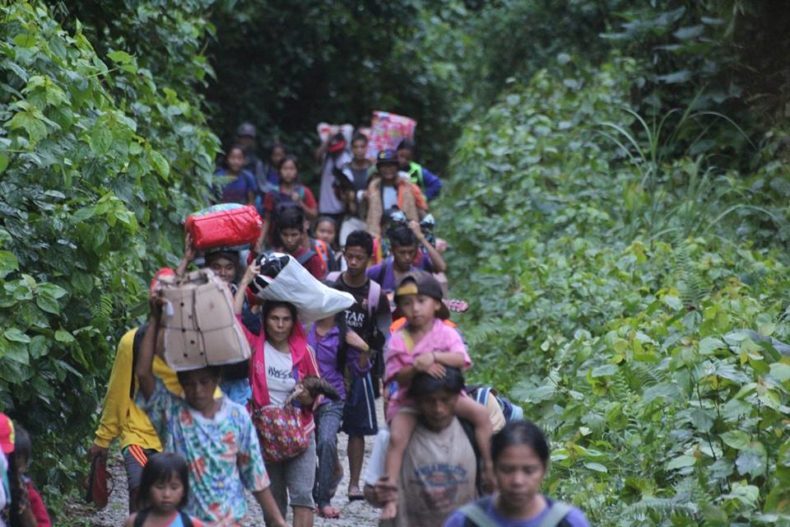
by Deep Green Resistance News Service | Jul 16, 2017 | Colonialism & Conquest
Featured image: This month, hundreds of Lumad evacuated their homes out of fear of being attacked by the military. Photo: ALCADEV
by Cristina Rey / Intercontinental Cry
Last May, the government of the Philippines announced the decision to subjugate the southern island of Mindanao to Martial Law. Now, the state is using its repressive apparatus to continue its attacks against Lumad (indigenous) teachers.
On the night of July 5-6, 2017, nine Lumad communities in the hinterlands of Lianga, Surigao del Sur, were forced to evacuate after an intensification of Philippine military occupations on their ancestral territories. The occupations began on July 2, 2017 when 60 soldiers in full combat uniform arrived in Lianga. With the memory of the violent 2015 Lianga Massacre still fresh, the Lumads of Lianga evacuated for the second time in less than two years when military bomber planes began circling above their communities around midnight on July 5, 2017.
Martial Law A Threat to Lumad Resistance
President Rodrigo Duterte’s declaration of martial law on the island of Mindanao on May 23, 2017 has been widely decried by Philippine national minorities and allied organizations, as it gives blanket protection and immunity for the military to perpetrate human rights violations, including the ongoing attacks on Lumad schools and communities.
Martial Law suspends habeas corpus and empowers the military to supersede civilian authorities in enforcing the law. Under the pretense of fighting terror, Duterte’s government has effectively levied its military power against some of the country’s most vulnerable populations.
Lumad communities have experienced increased militarization since the declaration of Martial Law, but state suppression of Lumad resistance and claims to self-determination through the use of force is nothing new. The Philippine military and its paramilitary counterparts have long targeted Lumads and their leaders because of their active defense against the encroachment on their lands by multinational mining corporations and other destructive industries.
Lumad Teachers Under Attack
The Philippine military and their paramilitary forces have historically treated Lumad education as a threat. Under Martial Law, increased attacks on Lumad communities continue to threaten the operation of Lumad schools.
On July 5, 2017, the evacuation affected 633 students and 43 volunteer teachers from six Lumad schools in Lianga, including the Alternative Learning Center for Agricultural and Livelihood Development (ALCADEV). When military forces neared Sitio Han-ayan, Diatagon in Lianga on July 5, schools and farms closed in preparation for a possible evacuation.

Photo: ALCADEV
ALCADEV was established in 2004 to fill the void left by inaccessible government schools. The center caters to the specific needs of indigenous youth and their communities. According to former ALCADEV student Glorivic Belandres, “we learned to fight for our rights when others attempt to trample on it. This has become a threat to the military. As soon as we became educated, they found it difficult to deceive us.”
The Philippine military has attempted to destroy Lumad schools through military occupation, redbaiting, and the targeting of Lumad teachers. In the Lianga Massacre of 2015, ALCADEV director and anti-mining activist Emerito Samarca was one of three community leaders murdered by Magahat-Bagani, a paramilitary group created by the Philippine military.
Now, twelve teachers and community leaders of ALCADEV and the Tribal Filipino Program of Surigao del Sur (TRIFPSS) are facing fabricated charges of human trafficking. According to human rights group Karapatan, these charges are used to harass the teachers and other key witnesses to the Lianga Massacre. Annabelle Campos, a TRIFPSS literacy coordinator facing charges, points to their resistance against mining projects as another motivation for the harassment Lumad teachers and community leaders are facing.
In another case of paramilitary harassment, on June 12, 2017 teacher and chairperson of the Association of Community Educators (ACE), Ramel Miguel, was interrogated and threatened by four members of the Alamara paramilitary group in front of 55 school children inside Salugpungan School, a Lumad school in Davao del Norte.
Lumad Students Take Action
Despite the implementation of Martial Law, Lumad students are standing up for their right to indigenous education.
From June 30 to July 10, 2017, Lumad students protested the militarization of their schools and attacks on their teachers by the Armed Forces of the Philippines and its paramilitary groups. Around 200 Lumad students and teachers held a Kampuhan (protest camp) in Davao City to demand that President Duterte end the militarization of Lumad communities in the face of martial law in Mindanao.

Photo: Save Our Schools Network
Lumad students have not been silenced by Martial Law. They will continue to demand that the government protect indigenous peoples’ right to education and self-determination.
















